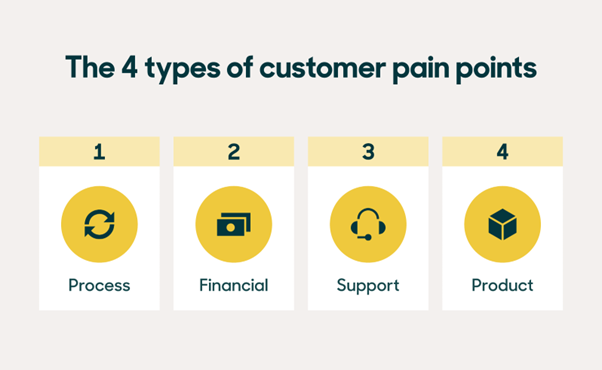People buy for Pleasure or Pain, Aspiration or Need.
How do you identify the Needs and Pain Points of your Customers?
A key factor that determines the success of a company is its ability to truly understand the needs and pain points of its customers.
This understanding forms the foundation for creating products and services that address real problems and provide value. In this blog, we will explore sales techniques to identify customer needs and pain points to enhance your business strategies.

Conduct Thorough Market Research
Market research is the starting point for identifying customer needs and pain points. It involves gathering information about your target audience, industry trends, and competitors.
Utilise both qualitative and quantitative research methods, such as:
- Surveys
- Focus groups
- Social media analysis
This will help you to gather insights into your customers’ preferences, challenges, and desires.
Listen to Customer Feedback
Customer feedback is a goldmine of information.
Whether it’s through:
- Customer support interactions
- Online reviews
- Social media comments
Paying attention to what your customers are saying can help uncover their pain points and unmet needs.
It’s important to regularly engage with customers to gather their opinions and experiences and make adjustments based on their feedback.
Create Buyer Personas
Buyer personas are fictional representations of your ideal customers.
By creating detailed personas that encompass demographic information, behaviours, goals, and pain points, you can better understand the motivations and challenges your customers face.
These personas serve as a reference point for tailoring your products and services to meet their specific needs.
Analyse Customer Journeys
Understanding the customer journey is crucial for identifying pain points.
- Map out the various touchpoints a customer has with your brand, from initial awareness to post-purchase interactions.
- Identify potential bottlenecks, moments of frustration, and areas where customers might be seeking additional solutions.
Addressing these pain points can lead to improved customer satisfaction.

Monitor Social Media and Online Communities
Social media platforms and online communities provide valuable insights into customer discussions, complaints, and recommendations. Regularly monitor these spaces to identify emerging trends, common challenges, and areas where your target audience seeks solutions. Engaging in these conversations can also demonstrate your commitment to addressing customer needs.
Offer Exceptional Customer Support
Your customer support team is at the forefront of interacting with customers.
You can train them not only to resolve issues but also to listen to customer concerns.
By analysing the patterns of customer inquiries, you can identify recurring pain points and take steps to alleviate them.
Conduct Surveys and Questionnaires
Surveys and questionnaires provide a structured way to collect targeted feedback from your customers.
Craft questions that delve into their experiences, preferences, and challenges.
This data can help you identify trends, prioritise pain points, and make informed decisions about product development and improvements.

Monitor Analytics and Usage Patterns
Data analytics can reveal valuable insights into customer behaviour.
- Monitor how customers interact with your website, mobile app, or products.
- Identify drop-off points, frequently used features, and areas where customers spend the most time.
These patterns can provide insights into both needs and pain points.
Identifying customer needs and pain points is an ongoing process that requires continuous effort and adaptation.
By combining thorough research, active listening, and a commitment to delivering exceptional customer experiences, you can develop products and services that truly resonate with your target audience.
Remember, a customer-centric approach not only enhances your business’s bottom line but also fosters lasting customer loyalty.
The KONA Group specialise in Corporate Sales and Management Training Programs and Tailored Business Growth Strategies.

If you would like to find out what we can do for your business, call us on 1300 611 288 or
Email info@kona.com.au






































































































